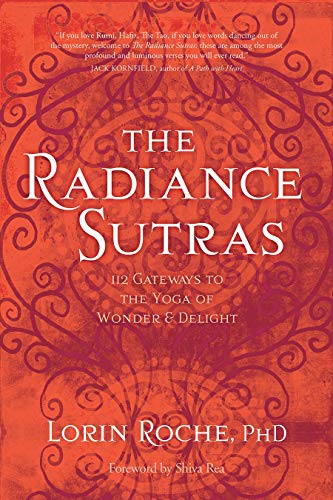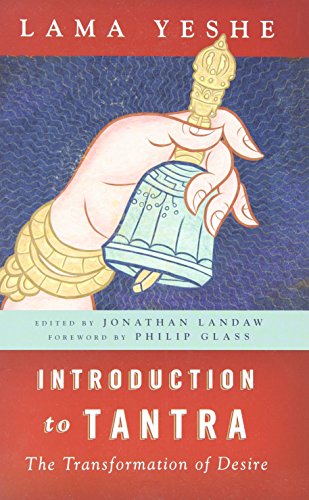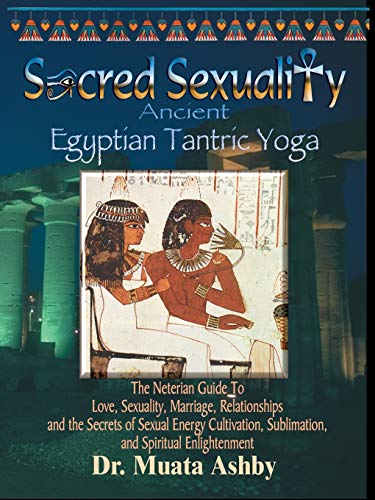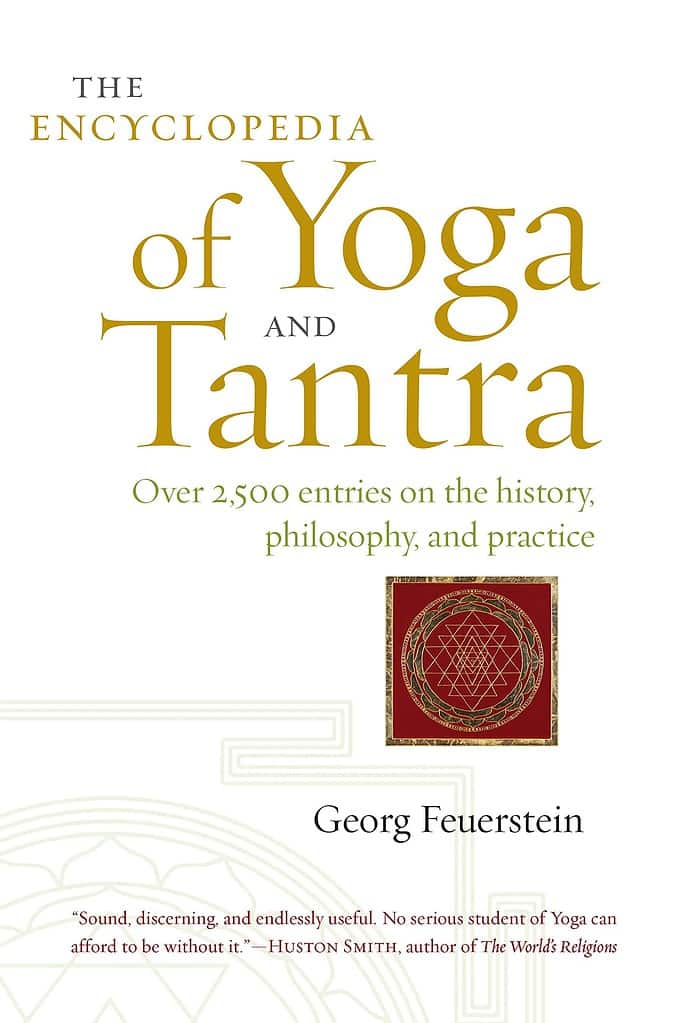How to Use Tantric Yoga to Harness More Self-Love and Conscious Pleasure
The post How to Use Tantric Yoga to Harness More Self-Love and Conscious Pleasure appeared first on The Yoga Nomads.
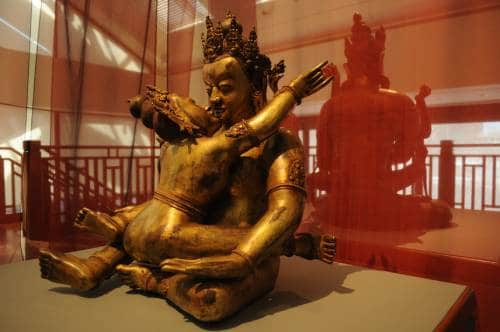
The first thing most of us think about when we hear tantra is tantric sex. But traditional tantric yoga isn’t all about sex. Rather, it’s about deeply tuning into your body and mind so you can experience a greater spiritual connection to yourself.
But yes, there are also sexual elements you can do with a partner or yourself to foster greater intimacy and love.
Tantric yoga merges meditation and traditional yoga practices together to help you connect to the real you. If you feel like you’ve been hiding behind a costume or false identity, tantra can help you uncover the roots of your authentic self.
Let’s dig into everything you need to know about starting your journey into the world of tantra yoga.
What is Tantric Yoga?
Tantric yoga is a ritualistic and energetic yoga practice that weaves together meditation, breath work, yoga asanas, rituals, deity worship, and chakra work to attain Samadhi or enlightenment. The main goal of tantric yoga is to help you attain a deeper level of understanding about yourself, leading to more self-love and acceptance.
Top 5 Best Tantra Yoga Books
Best for Tantra Meditation: The Radiance SutrasBest for Beginners: Introduction to Tantra: The Transformation of DesireBest for Tantric Sex: Sacred Sexuality: Ancient Egyptian Tantric YogaBest for Tantric Philosophy: Tantra Illuminated: The Philosophy, History, and Practice of a Timeless TraditionMost Comprehensive: The Encyclopedia of Yoga and TantraBest for Tantra Meditation:
The Radiance Sutras: 112 Gateways to the Yoga of Wonder and Delight (English and Sanskrit Edition)
This highly-reviewed book by Lorin Roche, pHD presents a unique perspective and guide to 112 Sanskrit teachings. It teaches tantra yoga and meditation students how to use these teachings in their practice to harmonize their life and find the divine spark within them.
Of all the introductory books to Tantra, Lama Yeshe’s book is the easiest for beginners to understand. It is a transformational spiritual book written specifically for Westerners that are seeking a greater understanding of Buddhism and Tantra. The author uses simple explanations that aren’t overly technical.
Best for Tantric Sex:
Sacred Sexuality: Ancient Egyptian Tantric Yoga: The Neterian Guide To Love, Sexuality, Marriage,...
Aside from its incredibly long title, this book is both a historical and practical guide designed to help couples cultivate more spiritual growth and conscious sexual union. It explores the true intent behind Tantric philosophy and how to apply it in physical and spiritual practice.
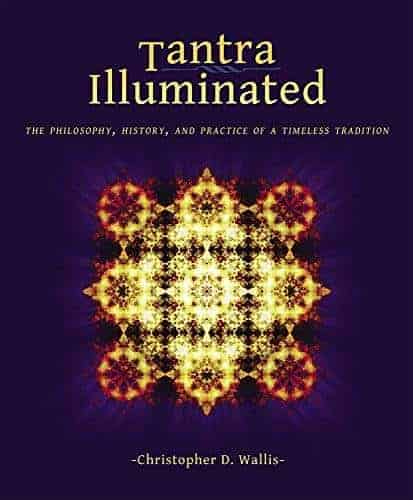
Best for Tantric Philosophy:
Tantra Illuminated: The Philosophy, History, and Practice of a Timeless Tradition
If you want to dig deeper into the ancient philosophy of Tantra yoga, this book provides all the spiritual implications and modern adaptations of the practice. Although it dives deep into Sanskrit texts and academic research, it’s written in a way that is accessible and relevant to a non-scholastic audience.
For the avid practitioner or serious student of tantra yoga, this extremely in-depth resource dives into everything from Sanskrit terms to tantric concepts to meditation, self-realization, and Hindu scriptures.
Meaning of Tantra
The Sanskrit word tantra means “loom, warp, weave” and can also be translated to “system” or “doctrine”. Tantric yoga aims to weave together the physical and spiritual as well as the masculine and feminine energies. It also weaves together many different yoga practices we find throughout yogic tradition, including:
Mantra meditationVisualizationMudrasPranayamaKundaliniTantric sexual unionWhat is Tantric Yoga Good for? (Benefits of Tantra Yoga)
Unlike many Westernized forms of yoga that focus on workouts or weight loss, a tantric yoga is centralized around purposeful breath and self-love. Some practitioners even describe it as “making love to yourself”.
The benefits of tantra include:
Reduce stress, anxiety, and depressionDeeper understanding of yourselfImproved sleepBoosted confidenceBetter performance in the bedroomGreater capacity for intimacySpiritual liberationHow to Use Tantra and Chakra Healing for Self-Love
If you feel like you don’t like who you are or are constantly “wearing a mask” to hide the real you, a tantric practice can help you gain control of your self esteem and connect to your authentic self. This healing starts with the chakras.
A chakra is an energy center in the body that is associated with specific organs, emotions, and spiritual concepts. When chakras are open and aligned, energy (prana) can flow freely through your body and your life feels balanced or joyful. But, when certain chakras are blocked, you may encounter troubles with certain aspects of life.
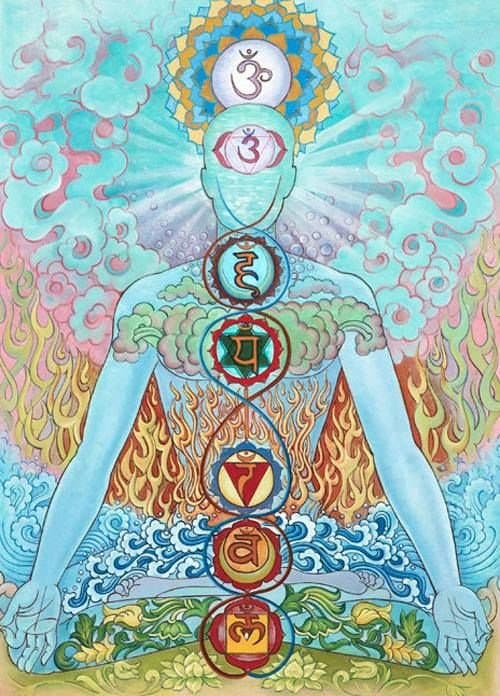
Problems with self-esteem and self-love are often based in the two lowest chakras: the root and sacral energy centers. Releasing blockages in these two chakras through tantra yoga therapy can help you achieve more confidence and self-esteem so you can love and accept yourself as a whole person (rather than labeling isolated parts of yourself as “good” or “bad”).
The Root Chakra (Muladhara)
Location: Base of the spine, between the anus and genitalia
Linked to: Identity, safety, security, Earth, grounding, instinct, and ancestry
Blockages: Insecurity, paranoia, exhaustion or “feeling stuck”, digestive issues, lower body pain, financial insecurity, stress, anxiety, or an overall lack of self-confidence
Learn more about the root chakra in this article.
Try this meditation to help unblock the root chakra.
The Sacral Chakra (Svadhisthana)
Location: Below the navel in the pelvic area
Linked to: Sexuality, creativity, water, emotional balance, desires, passion, play, and pleasure
Blockages: Detachment, loneliness, low libido, insecurity, fatigue, fear of pleasure, isolation, or a lack of creativity
Learn more about releasing blockages from the sacral chakra in this article.
Try this meditation for more self love:
The Truth About Tantra and Sex

One of the main differences between tantra and more traditional forms of yoga is that tantric practices aim to re-embrace all aspects of life (including food, sex, normal living, darkness and shadow work) as part of the yogic path. Traditional yogis, monks, and sages were often completed removed from the normalcy of life as they pursued enlightenment. They would practice celibacy and abstain from anything that incited sexual energy, including garlic!
The tantric view holds that human existence occupies a wide interconnected spectrum between consciousness and the material world. Trying to completely separate oneself from the material world (like many ancient monks and yogis did) could actually lead to imbalances because it prevented yoga from encompassing all aspects of life.
Tantra improves the yogis’ capacity to experience pleasure by removing blocks related to the root and sacral chakra. Instead of seeing sexual energy (including creative energy, self-love, and sacred union) as bad or distracting from the spiritual path, tantra embraces them.
Nonetheless, tantra still involves a lot of emotional control, self-knowledge, and conscious sexuality. Some practices include deep relaxation, breathing, massage, and asanas that strengthen the sexual organs. It’s not about reckless debauchery, rather tantra emphasizes conscious indulgence.
What is Tantric Yoga for Couples?
At its core, tantra is about connection and expansion of energy. This can be connection to yourself or to a partner through partner yoga or tantric sex. While it can include practices that heighten sexual energy, tantra sex isn’t just a sexual practice but a deep spiritual connection between a couple. It’s lovemaking on a spiritual level. That being said, it can radically improve your sex life as well as your connection to your partner’s heart.
Tantric sex is about removing blocks, shame, and trauma around sex so you can release the transformative power of orgasmic energy. Tantra offers techniques for sexual pleasure such as:
Body massageBreathe deeply in unisonMeditating togetherSlow embraces“Edging” (when a male holds and delays an orgasm and breathes with their partner to prolong pleasure for both of them)Soft caressesDominance and submissionDevotional eye contactUse this guide to start a sensual tantra yoga practice with a partner. Or listen to the Orgasmic Enlightenment Podcast with Kim Anami:
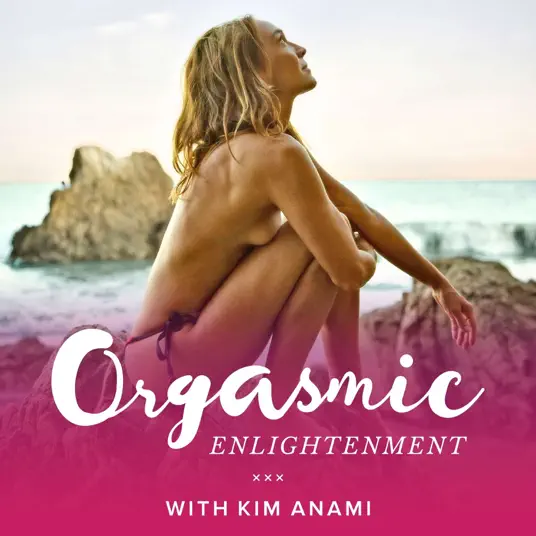
Tantra Yoga vs. Hatha Yoga
Tantra yoga includes many of the same poses you recognize from hatha yoga. In fact, hatha yoga is based on the same tantra philosophy of merging mind, body, and soul through the 8 Limbs of Yoga. Tantric principles became the foundation for hatha yoga when it emerged around the 14th century. Both aim to merge and balance the opposites, such as:
Masculine yang and feminine yinThe rational left brain and the creative right brainLight and dark energiesSun and moonSo, both tantra and hatha yoga traditionally fulfill the meaning of yoga which is “to yolk”. The key differences are how this merging is approached. While the Sanskrit word hatha translates to “force”, the term tantra yoga means “loom” or “weave”.
Hatha yoga is all about mental persistence, willpower, and strength as one develops the mental and physical disciplines of yoga and meditation.
Tantra weaves together the complexities of human life and the yogic path. However, modern Western yoga is usually based on the newer hatha traditions because the traditional tantric path involves…
An initiationA guruDeity invocationMantra practicesA sincere desire to achieve liberation or moksha (“enlightenment”) in this lifetimeFor this reason, tantra yoga in its strictest sense is not commonly practiced in the West. Nonetheless, we can still learn from its concepts and apply them to our practice.
Tantra Yoga vs. Bikram Yoga
While Bikram has a set sequence of postures that are the same in every class, tantra yoga classes typically have a different sequence each time. Bikram tends to be very asana-focused; it prioritizes the physical body and workout elements of yoga. On the other hand, tantra yoga emphasizes an intermingling of movement, meditation, chakra work, chanting, and pranayama.
For example, a Bikram or hot yoga class might hold Eagle Pose (Garudasana) with a focus on balance, strengthening, and squeezing the muscles. In a tantra yoga class, the same posture may be held as practitioners focus on radiating light in the Sacral and Root chakra. Tantric yogis can uncross their arms from a traditional “Eagle” arms to hold the Anjali mudra used by the Hindu king of birds, Garuda. While a Bikram teacher may encourage perfect alignment and going deeper into the pose, a tantra teacher may guide the students to meditate on humility and gratitude as they breathe.

These unique approaches to the same pose exemplify how tantric techniques aim to amplify the spiritual and energetic body, while Bikram focuses primarily on physical fitness.
Where did Tantra Originate?
Tantra is an eclectic philosophy rooted in Tibetan, Hindu, Buddhist, and Taoist traditions. It began around 300 to 600 CE in India, at least 1,000 years after yoga and built on many of the same philosophies.
While the Vedas were the primary ancient scriptures for yoga, the Tantric texts came centuries later. Both Vedic and Tantric traditions are ultimately intertwined, which is why even top scholars have had difficulty fully separating the two.
Tantra and Shakti
Devout tantra practitioners worship of the Divine Mother (Shakti) as the supreme goddess of the Universe. Shakti energy is the primordial cosmic energy that means power or feminine energy. In the body, shakti is concentrated in the Sacral chakra located between the genitalia and the navel. This dynamic energy is responsible for creation and birth, which could mean physically birthing a child or mental creations such as artistic endeavors.
Key Takeaways: Tantra Yoga is a Body-Positive Form of Spirituality
While some other forms of yoga and religion may demonize bodily love or sexuality, tantra embraces it as part of the spiritual path. We hope tantra can help you foster a deeper sense of self-love and connection to yourself as well as the universe.
Namaste!

 FrankLin
FrankLin 